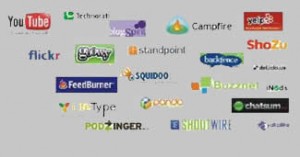HTML 5 – What it Is and How it Affects You
HTML 5 is about to completely redefine how websites are created and experienced. HTML, or Hyper Text Markup Language, is the code with which websites are written. With the release of HTML 5, many things that were difficult or impossible to do in HTML 4 are now easy. Read on to learn more about the release of HTML 5 and what it might mean for you.
Graphs, Charts, Complex Graphics – On the Fly
In the past, you had to use outside plugins or code to generate graphs, charts or other graphics. Now HTML 5 will support an element called the Canvas Element that allows you to generate graphics right on the fly.
Embedded Video and Audio
HTML currently supports a rudimentary method of embedding video and audio that nobody really uses. It’s slow, the player is unattractive and is often buggy. HTML 5 is aiming to change that.
Currently, most people use 3rd party plugins like flash to display video or audio. YouTube, for example, is a flash player. Most other players are also written in flash.
With HTML 5, you’ll be able to embed video and audio directly into the browser without using a third-party coding language like flash. It’s designed to be fast and efficient.
Run Applications – Without the Internet
Most web applications don’t work when you disconnect from the internet. Google Docs for example – If you disconnected from the internet, you could keep browsing the doc you’re on, but you couldn’t pull up another document or make edits.
With HTML 5, you’ll be able to run web applications as if they were desktop applications – Without needing to download anything. It’s called “Offline Web Applications” and it works just like it sounds: Web applications that work even when you’re offline.
Accurate Geolocation
Currently, locating someone online is possible by decoding their IP address. However, IP addresses aren’t a sure thing when it comes to location.
HTML 5 will come with its own Geolocation technology to help website owners decode where visitors are located. This will help them tailor web content to the location of the browser. For example, news sites will be able to show you only news stories that relate to you based on where you’re at.
More Styles, Better Forms and More
HTML 5 will feature stylable elements, which can be visually altered with CSS. This means more dynamic and more visually appealing websites
Forms too will be getting an upgrade. You’ll be able to add sliders to forms, pick data and more.
HTML 5 Summary
HTML5 is an upgrade of the very framework that the internet runs on. Once all the browsers adopt HTML 5, you can expect a significant jump in the quality of websites everywhere.
If you’re a website designer, HTML 5 will give you wider range of tools to play with. It’ll speed up and simplify how things are done currently in addition to giving you completely new elements to play with. If you’re a website browser, you can expect certain things to speed up, improved designs and graphics as well as better video, audio and web software.
Enjoy the new and ever evolving internet!
